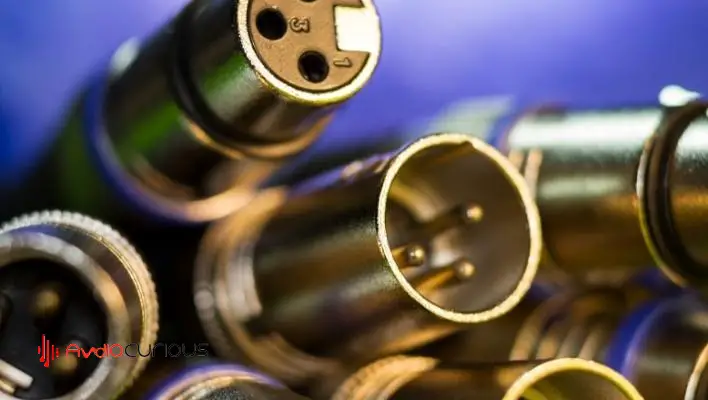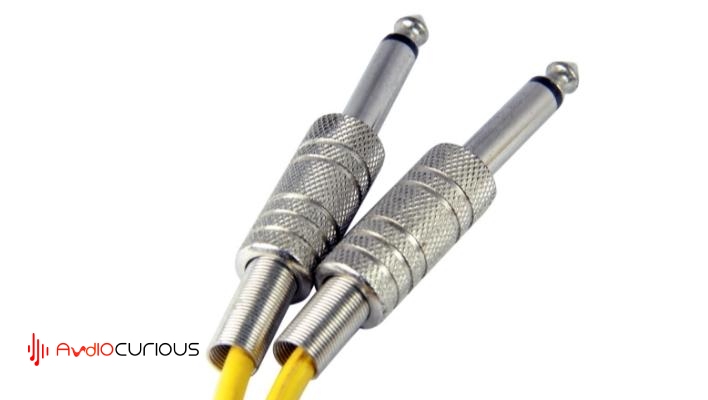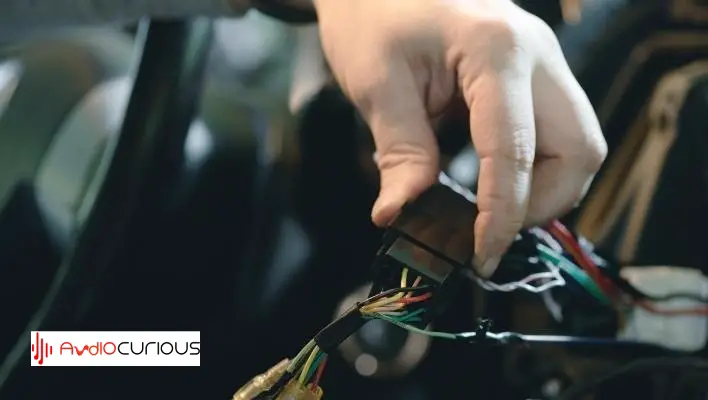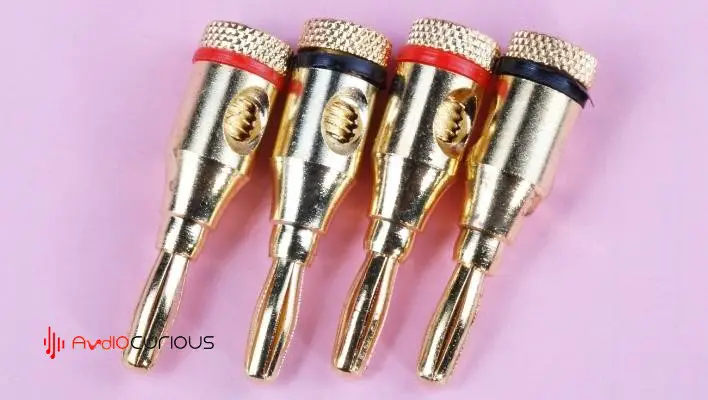You don’t have to be a visual artist to appreciate the merits of audio connectors. The right connector can make all the difference in the world when it comes to getting your music or sound effects right.
The audio connector is the medium through which you send and receive sound. It has been around for a long time and is still used on some devices today. The different connectors are designed to be used with different kinds of equipment, so it’s important to know what kind of connections your equipment uses.
However, with numerous types of connectors in the market, how do you know which one is right for you? This article examines some of the most common audio connectors and shows you how to choose between the different types of audio cable connectors
What are Audio Connectors?
Audio connectors are used to transmit sound from one device to another. They are also called jacks, plugs, or sockets. These connectors can be used in any electronic device: computers, TVs and stereos, cell phones and tablets, gaming systems, and more.
Different types of audio connectors available are compatible with various kinds of devices. Audio connectors are the parts of an audio system that connect the input and output devices. There are several types of audio plugs, each with a specific purpose.
The most common audio connection types include RCA jacks, XLR jacks, TRS (1/4” audio cable phone plugs), and RCA phono plugs.
Importance of Audio Connectors
The audio connectors are the devices that connect the audio source, such as speakers and headphones, to a computer or other electronic equipment. They allow you to transmit sound from one device to another. There are two types of audio connectors: analog and digital.
Analog connectors are used for transmitting electrical signals that represent sounds. Digital connectors have a digital signal instead of an analog signal. The digital signal represents the sound better than an analog signal because it’s more accurate and can be transmitted over longer distances without losing quality.
If you want to connect your device with another device that doesn’t have an audio extension cable, you will need an adapter cable or a converter box instead. An adapter cable is like a long USB cord that connects two devices so they can both work together as one unit instead of having two individual units in separate locations.
The Different Types of Audio Connectors
There are many different types of audio connectors, each with its characteristics and uses. Here are the most common:
XLR Connectors

XLR connectors are designed specifically for recording equipment, so they’re more expensive than other types of connectors. This is because they’re meant to last longer than regular ones and are more durable.
XLR connectors are a type of connector used in audio, video, and power applications. They are a popular choice for professional audio, where they are commonly used to make connections between microphones, audio sources, and speakers.
XLR connectors come in three different forms: male, female and balanced. The male connector is the most common type; it has four pins on its sides and one pin at the top. The female connector has two pins on each side, while balanced connectors have four pins on each side.
Pros:
- XLR audio jacks have a balanced impedance optimized to deliver the best signal possible while maintaining low distortion. This makes them ideal for use with high-end audio equipment, such as home theater systems and professional audio equipment.
- The XLR connectors are standard audio port types used in professional recording studios, recording booths, and other high-bandwidth applications.
- They are more durable than other types of stereo connectors because they have thicker insulation. It reduces signal loss over time due to corrosion or water damage from humidity or high temperatures.
- Insulation material is copper-clad aluminum alloy, so it’s much more reliable than other connectors.
- The outer shell is made of a special epoxy resin material, which makes it more durable and long-lasting than other connectors.
- It has good mechanical performance and excellent electrical performance, which can effectively meet the needs of professional audio equipment manufacturers.
Cons:
- Because these connectors are very durable, they can be expensive compared to other types of cables and connectors that may not last as long or be as reliable over time.
RCA Cables

The RCA connector connects audio equipment to a receiver or amplifier, such as CD players, TV sets, and VCRs. The RCA connector has five metal prongs, two ground prongs, and one video/audio wire.
It has a red stripe on one end that indicates the left audio channel, marked with a black stripe. The other end of the cable has a white stripe that shows the right audio channel. This type of connector is commonly called “ribbon cable.”
The RCA audio plug consists of two rows of three-terminal contact pins connected to the cable shields with a central pin. The pins are typically colored red (hot), white (cold), and black (ground).
Depending on the cable length, the cable shield may be colored blue or grey. The shield of a longer cable has to carry more current than a shorter one due to Ohm’s law; this is why it is usually insulated from the metal pin.
RCA connectors are used for audio and video applications, such as connecting external devices such as CD players to television sets or home theater receivers to speakers. They are also used for interconnecting equipment within an audio system, such as amplifiers, preamplifiers, equalizers, subwoofers, etc., when multiple channels need to be connected simultaneously.
Pros:
- Simple design: The main reason why this connector is so popular is because it’s simple, easy to use, and works well without any problems. It doesn’t require any special tools to connect or disconnect cables from it.
- Remote control compatibility: If you want to use your television as a remote control for other devices such as computers or phones, then using an RCA cable will make that possible without buying additional accessories or wires separately.
- Wide range of connections.
- Cheap to buy and repair.
Cons:
- Not suitable for high-power applications due to high voltage drop.
TRS Connectors

The TRS connector is a connector designed to combine the function of a standard stereo mini-jack and RCA jacks. It features 1/8” TRS phone plugs on both the male and female sides, with a gold-plated center pin.
The TRS-Male connector has two pins. The center pin is positive, and the outer ring is negative. The TRS-Female connector has four pins, and the center pin is positive.
The TRS audio cable has been used since the 1960s in consumer electronics, especially hi-fi equipment, as an alternative to RCA connectors for connecting two devices.
Pros:
- High quality, stable and reliable.
- No need for any additional components to be connected to the audio system.
- The TRS audio plugs are compatible with all audio systems.
- It is flexible, so you can easily connect it to your existing audio system, and the length of the cable is also adjustable, which means you can use it in any area of your house or office.
- You don’t have to worry about tangling due to its flexibility.
- Compatible with most devices.
- Easy to use.
Cons:
- The TRS connector has no shielding, so it can pick up noise from its surroundings. If you have an active circuit or other electronics near your mic or speakers, they will be exposed to this noise.
- Not as durable as XLR connectors.
- It may break easily if not used properly.
BNC Connectors

BNC connectors are used in coaxial cables to transmit video, audio, and data signals. The BNC connector has four gold-plated pins, making it resistant to corrosion. The outer shell of the BNC connector is plated with nickel, which is an excellent conductor of electricity.
The BNC connector has three different types: male, female and duplex. To use this connector, you must use an adapter sleeve or a straight male-to-female adapter.
They are used for short cable runs and mainly in the broadcast industry. They are available in various lengths, from 1 to 50 meters, with various connector types, including F-type and T-type. BNC connectors can also be used on coaxial cables, satellite dish connections, and when connecting devices such as cameras or video recorders.
Pros
- Smaller size and lighter weight.
- Better heat dissipation performance.
- Provides a higher degree of protection against EMI/RFI interference.
- Gives a higher degree of protection against contact failure due to excessive current or voltage.
- Better mechanical strength than other types of connectors (e.g., F, RCA, TRS).
- More common usage.
Cons:
- High insertion loss, but good return loss performance.
- The connectors are unsuitable for high-speed CATV systems with more than 10 MHz frequency.
Speakon Connectors

Speakon connectors are among the most popular speaker wire connectors on the market. They are used in applications where high power and low noise are required, such as PA systems and headphones.
There are two types of Speakon connectors: male and female. The female connector is inserted into a jack on an amplifier or receiver, and the male connector plugs into it. The male connector is generally attached to the speaker or amplifier, while the female connector is connected to another device, such as a power amp or mixer.
Speakon connectors are popular for their high-quality sound reproduction and durability. These connectors are also known as “L” brackets because they resemble a pair of metal brackets with holes.
Banana Plugs

Banana plugs are among the most common and widely used audio connection types in audio and hifi equipment. Banana plugs have a central pin that is surrounded by a collar and has two or more radial holes surrounding it. These two or more radial holes provide strain relief for the cable, making it easier to handle while protecting accidental disconnection.
A banana plug can be inserted into another device at an angle if you want to connect two devices but don’t want to use RCA connectors or cables that require special adapters or splitter boxes.
3.5mm Jack Socket

This type of connector uses an opening in its center so that you can insert an instrument into it. You can also connect this type of audio connector to another 3.5mm jack socket through an extension cord or Y-cord. This audio connector type is called “jack socket” or just “jack.”
How to Choose the Right Audio Connector
When you’re shopping for an audio connector, it’s essential to understand what you’re looking for. Audio connectors range from simple to complex, and even the most basic can be used in various applications. Here are some things to consider when choosing the right one for your project:
1. What’s the connector shape and size?
Audio connectors come in various sizes, ranging from 0.75 mm to 5 mm. The size determines how thick the cable is and how much space it will take up within a circuit board or enclosure.
You’ll also need to consider how much power your device requires and whether you’ll be mounting it outside its case (which can affect its overall size).
2. What’s the wire gauge?
Wire gauge describes how thick each strand of wire is. The wider the strand, the more resistance it has to current flow (and, therefore, how much power it can carry).
Generally speaking, larger wires will run cooler and last longer than smaller ones (although this depends on how much current flows through them).
3. Number of pins
Audio connectors usually have six pins, but there are some with eight or more. You will use these if you’re working with high-power devices like amplifiers or speakers that need more current flow than a typical headphone jack can provide.
4. How much length do you need?
The longer, the better, as long as it doesn’t get tangled up in your gear.
5. The type of cable that’s being used.
Several types of audio cable connectors are available, including coaxial, optical, and even USB cables. The type will depend on what device you are using and what kind of connection it has (iPod vs MP3 player).
Conclusion
The best way to choose the right type of audio connector is to study your application, then compare a few options. If you’re not sure, start with two that are similar in size and style. Then try all the rest. There’s no formula for it.
The suitable audio connector is the one that fits your needs. If you need a fast connection and don’t want to be limited by the length of your cable, then you need to choose an adapter with a shorter cable. If you’re going to be using a lot of speaker wire, then go for something like banana plugs or spade connectors. All the best.

